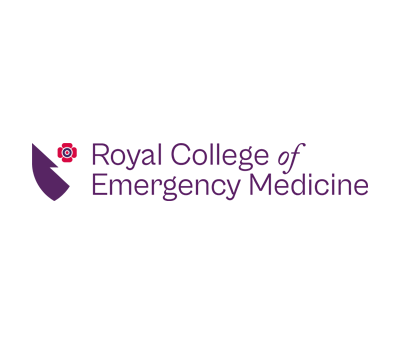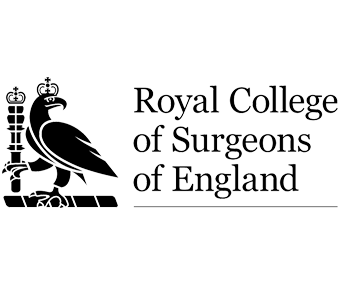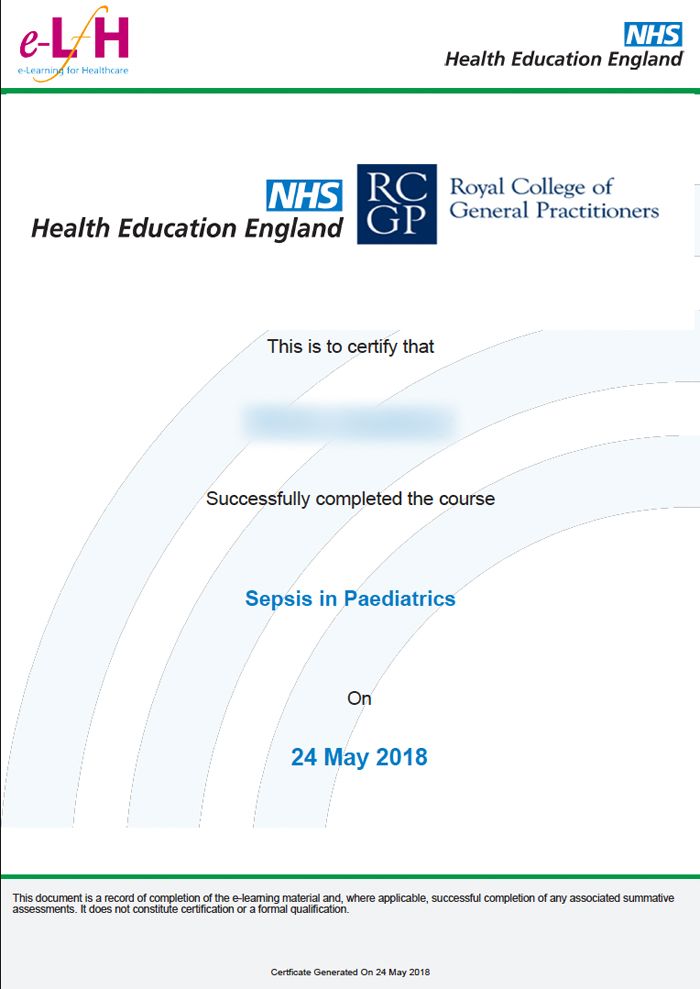


Course Features
- Suitable for all healthcare professionals globally
- Interactive and engaging, with videos, case studies and questions
- Written by leading clinical experts in the UK
£23.00 Excludes VAT where applicable.
Multiple or multi-year licences are available, please contact us for details.
Contact UsAny questions? FAQ's
Sepsis
This high-quality elearning programme helps healthcare professionals to spot the early signs of sepsis, provide timely treatment and ultimately save lives.
The programme is suitable for a very wide range of healthcare professionals globally, including general practitioners, hospital doctors, nurses, community midwives and paramedics.
A high-quality sepsis training programme
Available online, the training modules cover a very broad range of themes, from sepsis in children through to the elderly, and complex issues such as maternity and neutropenia.
Developed by NHS England’s elearning for healthcare and written by leading clinical experts from several Royal Colleges and professional bodies including in the Royal College of General Practitioners, the Royal College of Surgeons, the Royal College of Emergency Medicine and the Royal College of Paediatrics and Child Health. So, it meets the highest quality and training standards.
The Sepsis elearning programme is packed with images, videos, animations and questions to help bring the subject matter to life and foster deeper understanding on the key themes involved.
An invaluable resource for practitioners globally
You can review clinical data and medical histories for patients using case studies – and build your confidence and skills in diagnosing the condition. You can also watch interviews with the parents of children affected by sepsis – helping you to put the learning into a real-world context.
This is an invaluable learning resource that will help you play your part in improving the diagnoses of sepsis and positive outcomes for patients.
As a GP, I see many cases of sick children. And most of these, of course will have viral infections or localised bacterial infections, and they’ll get better on their own.
However, time and time again, we hear of cases where sick children have been taken to be assessed at GP surgeries, and even to A&E departments. But for some reason the clinicians assessing the child failed to detect, record or even consider an underlying developing sepsis.
But the challenge for all of us is to ensure that we have the skills necessary to be able to pick up those children who are developing the features of sepsis. In short, we need to think sepsis.
When she initially died, I was led to believe that she died of something incredibly rare. And we were just very unlucky. But actually, it seems now that it’s not that rare. And if it had been spotted earlier, she would be alive.
She had a cold, and it wouldn’t shift. And, but I didn’t think anything of it because kids get colds. But this particular one wouldn’t shift. Normally, you would go within a few days.
I took it to the GP in the morning, and we saw a young doctor in our practice. She examined more than did all the things that one would expect. Took a temperature, pulse, talked about the sort of chronology of what had happened. We talked about the symptoms and then, and I said, you know I’m here because I’m worried it’s going to go to her chest and said, okay, and so I think she got the spatula and looked at the throat.
So she addressed all the things that you would address to a child presenting those symptoms. As as we left, and I said, so you’re absolutely sure that it’s not going to go to her chest, and she paused and went, actually, why don’t you go down the drop in A&E, so you know, that was great of her to make that decision. But it was something that she decided she should do.
She wasn’t working from a book. She wasn’t working from a system of care. That was some a moment of clarity that she should do that.
The next day, I noticed that her breathing was really laboured. She was really struggling to catch her breath and when she was deep breathing her chest, which I now know to be called Stridor or it was starting to happen.
She was less listless, her eyes were rolling and she was catching her breath. And I said immediately, let’s just go. So we picked her up, took her out and got her into the car. And it was terrifying, thought she was gonna die there in the car.
This happened really quickly. So you can imagine in the morning, you know, she was fine. Having the sore throat and then throughout that short period of time. It had got worse.
Bessie came in and she said she’d been playing with Moud. But she couldn’t wake her up. I went in and she was in the court face up and she was dead.
She had gone pale, she had blood come coming from corner of her mouth. And I knew she had died. So I was just calling her name. And I picked her up
and then I took her out into the hall and Clara was screaming and I was calling her name, Moud’s named and waiting.
Shouts to wake her up and Bessie was I’m what was going on and I took her upstairs, I held her to go upstairs and climb employees saying what’s wrong, and I said, I think I think she’s gone.
And then I came up here into this room on the floor, and I try to save her.
I’ve spent almost 20 years looking at children with Sepsis and it’s so frustrating and upsetting each time we hear of another case who wasn’t diagnosed early, and who has died unnecessarily.
The clinical features of sepsis often attributed to other conditions, and the clinical features of infection in that blood compartment, you have to think about it as a separate compartment, you have to think about the infection being in the bloodstream and how it affects all the organs in the body.
And if the heart rate goes up very high, sometimes people think is due to the fever, or they think it’s because the child is agitated.
Similarly, when the respiratory rate goes up, people think that’s because it’s due to a cold.
And so you can see that the symptoms of the infection within the bloodstream that are just often attributed to other causes, even if they can’t see infection in those areas, and so the constellation of clinical features is missed.
The one feature of sepsis that makes it even more difficult to spot is that the children, children remain alert, they’re talking and this falsely reassures doctors, and even their parents, because they feel that if they’re talking, they can’t be that bad.
But in fact, where the infection is in their bloodstream, things are going very badly wrong and there are a lot of signs to see there.
You need to be able to put them all together and we will only get doctors to do that if we change the way they think. And we get them to think sepsis. Each time they see a child presenting acutely ill.
I sort of think of my life now as in two parts, you know, there was my life before and you know my life since. You do you do learn to live with it. You have to keep going but it’s, it has just been completely devastating.
If you are a GP remember that sepsis can result from many common infections. So when you see a child who’s unwell, think sepsis, measure and record their vital signs, including their conscious level.
And alert their parents or carers to the clinical features that could indicate a worsening in their condition, particularly if they start to appear drowsy or confused.
If you suspect Sepsis, send the child hospital fast and alert the hospital to your concerns. If you are in hospital and you suspect sepsis, immediately do the following.
- Arrange for immediate senior review, give oxygen.
- Take Bloods, including cultures glucose and lactate.
- Give intravenous antibiotics, give intravenous fluids
- Continuously monitor the child and if you’re concerned, call intensive care.
To find out more about sepsis, how to recognise it and what to do when you see it. Do have a look at these links where you will find a really comprehensive range of educational and clinical resources.





